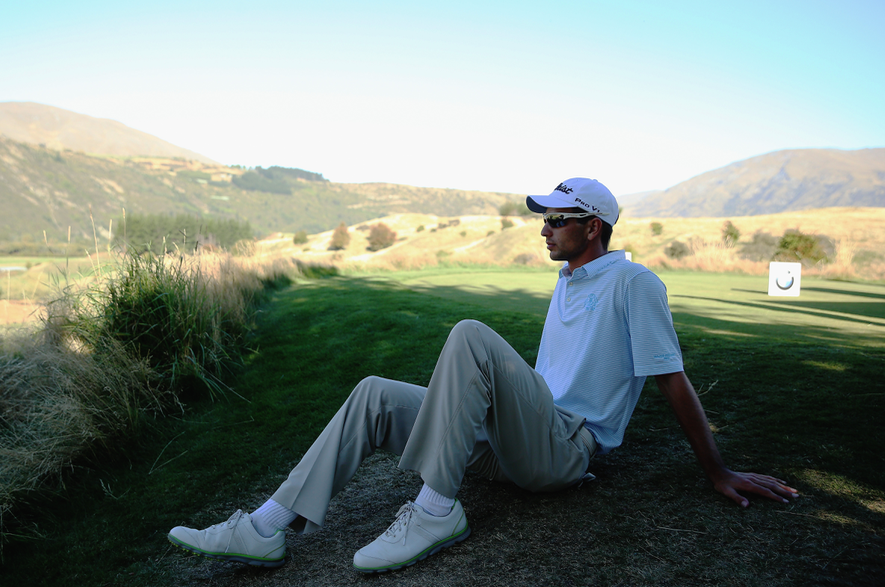Is waving through always the best option?
Is waving through always the best option, especially on a busy golf course?


Waving through the group behind has always been the convention when searching for a ball, but is that always the best thing to do on a busy course?
Page 20 of the etiquette section of the Rules of Golf says this: “Players searching for a ball should signal the players in the group behind them to play through as soon as it becomes apparent that the ball will not easily be found. They should not search for five minutes before doing so.”
This is in the etiquette section, little of which is readily enforceable by penalty or disqualification – it is simply advice to help everyone get the most out of their golfing experience.
With the game seemingly grinding to a halt, surely any advice encouraging players to allow others through should be applauded? Well, yes and no...
Let’s focus on that first sentence, and in particular the phrase, “as soon as it becomes apparent that the ball will not easily be found.”

How often does that really happen? In most cases, the waving through, if it comes at all, won’t be until the countdown is well on its way towards five minutes, by which time the intended benefits have been all but nullified.
Subscribe to the Golf Monthly newsletter to stay up to date with all the latest tour news, equipment news, reviews, head-to-heads and buyer’s guides from our team of experienced experts.
When the course is not busy and every available space on every hole isn’t taken up, then waving through is a very good idea that should be heartily endorsed.
But what about during the monthly medal when 100 or so golfers might be out there back to back and there’s barely room to breathe even before anything goes wrong.
Who actually benefits then from the wave-through? One group and one group alone – those waved through. For everyone else behind, it simply adds another five to 10 minutes to the round as play backs up while the call-through is acted out.

Those who have been waved through will be celebrating, but for everyone else, does it really help on a crowded course, especially if the call-up doesn’t come early in the search as per The R&A guidelines? Common sense would suggest not.
Convention has always been that once the call-through has happened, the group called through should proceed regardless, but again, is that always the wisest thing for the good of the overall field on a busy course?
What if the ball is found before the second, maybe even first player behind has even teed off?
In the wider interests of the field, wouldn’t it be better for the group ahead to simply continue, rather than stand there twiddling their thumbs for 10-15 minutes, staring at a perfectly playable ball while the group behind all tee off, walk down, find their balls, play their approaches, walk up to the green, putt out and finally clear the hole?
Going back to that phrase “easily found”, what constitutes a reasonable time to search before beckoning those behind down?
If you’re too hasty and the ball appears the instant you beckon, you now have a long wait under the standard call-through convention. But if you wait too long, you’re just adding insult to injury for those caught up in the knock-on effects of a protracted call-through down the line.
For some, such thinking will be too radical or just plain wrong. But on a busy course, I believe the whole issue is far less clear-cut than it may at first seem, and at a time when people are crying out for ways to address slow play, perhaps a degree of rethinking is required on crowded golf courses.
And the very people who are adamant that the second part of this call-through advice should always be enforced – i.e. the group behind must play all the way through and clear – are often somewhat less meticulous in adhering to the first part concerning the amount of time allowed to elapse before the call-through comes.
So am I out on a limb here, or is there a degree of common sense with regard to a slight call-through rethink on a jam-packed golf course?

Jeremy Ellwood has worked in the golf industry since 1993 and for Golf Monthly since 2002 when he started out as equipment editor. He is now a freelance journalist writing mainly for Golf Monthly. He is an expert on the Rules of Golf having qualified through an R&A course to become a golf referee. He is a senior panelist for Golf Monthly's Top 100 UK & Ireland Course Rankings and has played all of the Top 100 plus 91 of the Next 100, making him well-qualified when it comes to assessing and comparing our premier golf courses. He has now played 1,000 golf courses worldwide in 35 countries, from the humblest of nine-holers in the Scottish Highlands to the very grandest of international golf resorts. He reached the 1,000 mark on his 60th birthday in October 2023 on Vale do Lobo's Ocean course. Put him on a links course anywhere and he will be blissfully content.
Jezz can be contacted via Twitter - @JezzEllwoodGolf
Jeremy is currently playing...
Driver: Ping G425 LST 10.5˚ (draw setting), Mitsubishi Tensei AV Orange 55 S shaft
3 wood: Srixon ZX, EvenFlow Riptide 6.0 S 50g shaft
Hybrid: Ping G425 17˚, Mitsubishi Tensei CK Pro Orange 80 S shaft
Irons 3- to 8-iron: Ping i525, True Temper Dynamic Gold 105 R300 shafts
Irons 9-iron and PW: Honma TWorld TW747Vx, Nippon NS Pro regular shaft
Wedges: Ping Glide 4.0 50˚ and 54˚, 12˚ bounce, True Temper Dynamic Gold 105 R300 shafts
Putter: Kramski HPP 325
Ball: Any premium ball I can find in a charity shop or similar (or out on the course!)